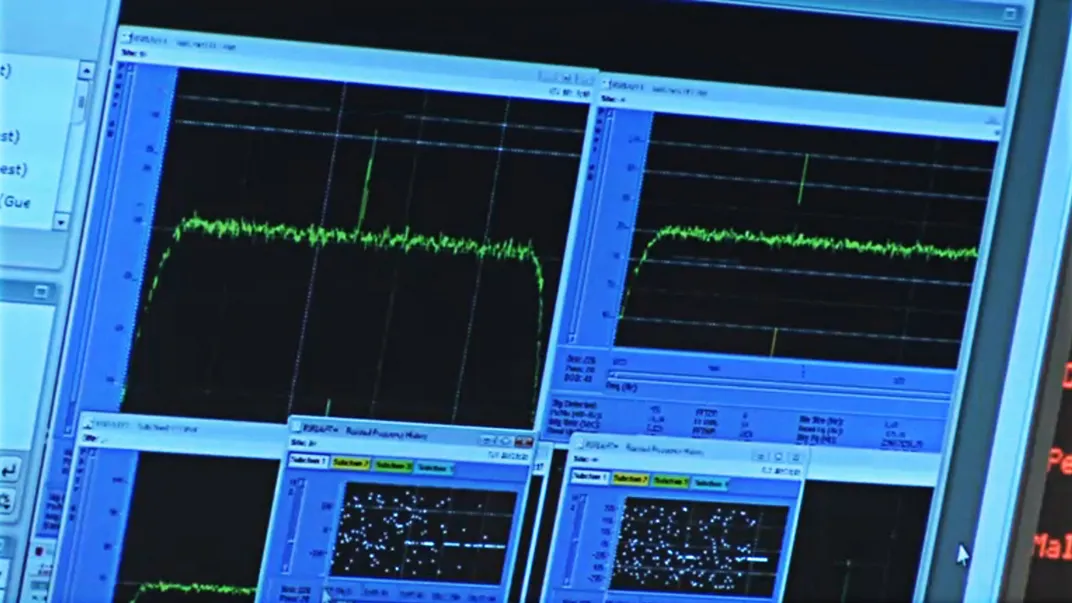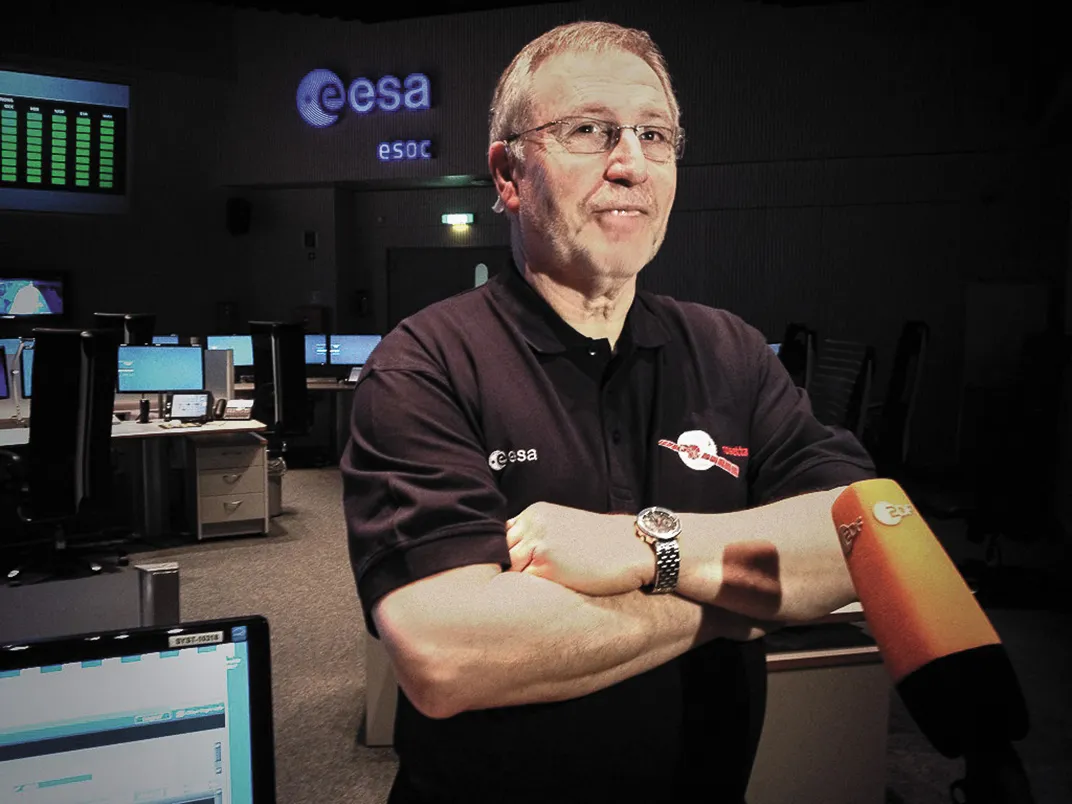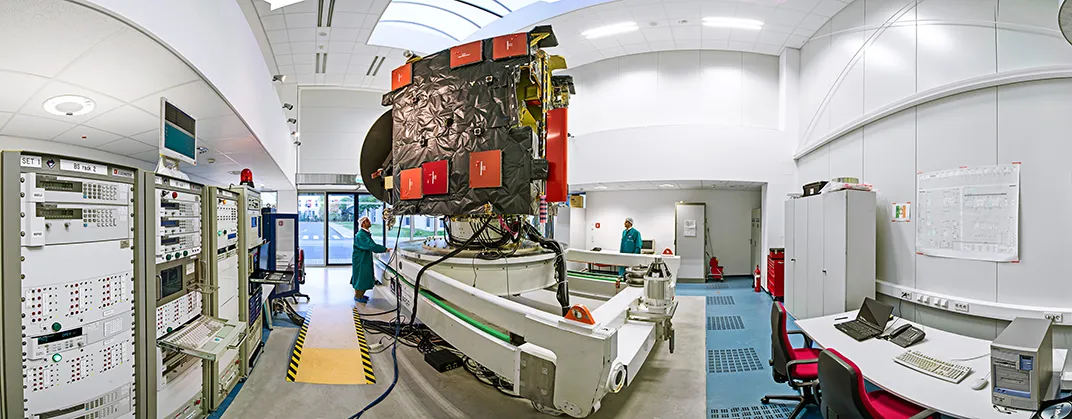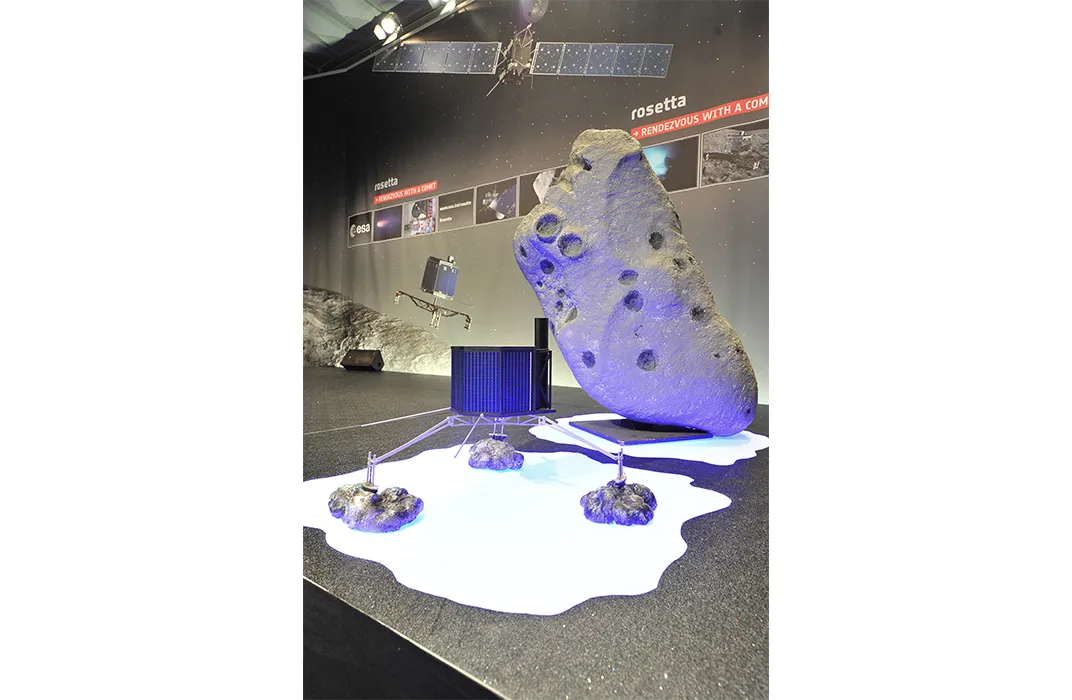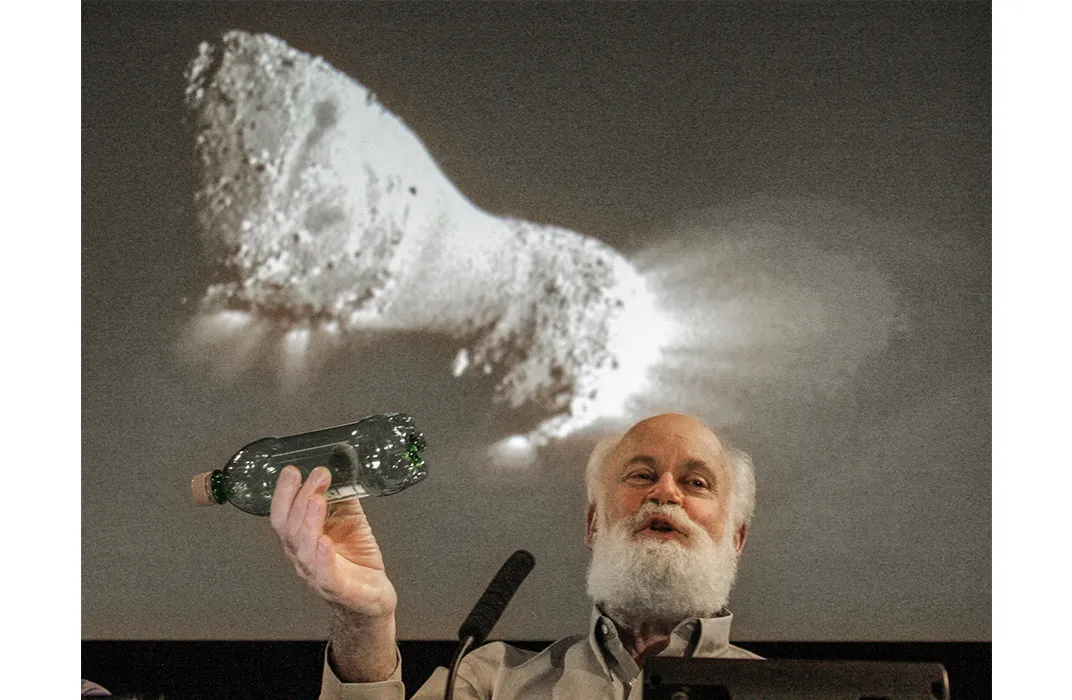Rosetta the Comet Chaser
A European spacecraft is about to make history’s first landing on a comet.
/https://tf-cmsv2-smithsonianmag-media.s3.amazonaws.com/filer/b8/75/b875c796-fc0f-427e-83a2-6b48f6218b3c/01-rosetta-the-comet-chaser-opener.jpg)
It has been a long trip for Rosetta. On March 2, 2004, the European Space Agency probe was launched from Kourou, French Guiana, to rendezvous with a comet streaking along at 24,600 mph. Scientists hope that Rosetta will be a codebreaker like its namesake, the ancient tablet that gave scholars the key to deciphering Egyptian hieroglyphics. The new Rosetta, they believe, can unlock clues to the early history of the solar system and to objects that have mystified sky watchers since Babylonian times.
Rosetta spent the first seven years of its mission getting into a position where it could eventually intercept its target, Comet 67P/Churyumov-Gerasimenko. After four gravity assists and two asteroid flybys, mission engineers sent the spacecraft coasting on a 957-day hibernation in deep space. On January 20, Rosetta got a wake-up call. Now the bright-eyed spacecraft is making the final approach to its destination for a rendezvous this fall.
A ball of ice and dust about two and a half miles across, Churyumov-Gerasimenko was discovered in 1969 by the Ukrainian astronomers for which it’s named. It’s a short-period comet: It was created in the Kuiper Belt, at the edge of the solar system, and orbits the sun about once every seven years. (Long-period comets have their origins beyond the Kuiper Belt and follow eccentric orbits that can take from hundreds to thousands of years to complete.) Over eons, the gravitational influences of larger bodies have altered Churyumov-Gerasimenko’s orbit, which now extends out near Jupiter. Gerhard Schwehm, who worked with the Rosetta team from 1985 until he retired as mission manager last March, says they had originally targeted another comet, 46P/Wirtanen, for Rosetta’s destination, but in 2003, after a year-long delay due to some issues with the Ariane 5 rocket that would launch the spacecraft, Churyumov-Gerasimenko moved off the back-up list.
To catch it, the team needed to get Rosetta into the comet’s orbit. As the spacecraft made four orbits around the sun, it flung itself around Earth, then around Mars, and then around Earth twice more, accelerating and adjusting its course along the way. On its route to match the comet’s path, Rosetta also flew by two main belt asteroids, in 2008 and 2010, and field-tested many of its 21 instruments.
In the summer of 2011, Rosetta passed through the main asteroid belt, between the orbits of Mars and Jupiter, and continued out toward Jupiter’s orbit. At that distance from the sun, the spacecraft’s 104-foot-span solar panels were producing less and less energy, so mission controllers put Rosetta into its planned hibernation, shutting down everything but minimal heating for vital components. The spacecraft slept for almost three years. A wake-up alarm went off this past January as Rosetta was inbound on the interception lap, 500 million miles from the sun. At mission control in Darmstadt, Germany, where the event was live-streamed on the Internet, a tall blip appeared on the console, the signal that Rosetta had responded to the alarm. The team erupted into cheers.
As Rosetta approaches the sun, its solar arrays will produce more power, though only gradually, so activating the spacecraft “will be an incremental process,” says Matt Taylor, who chairs the mission’s science team. Rosetta is the only spacecraft to travel such a distance—now more than 3.8 billion miles—using only solar arrays as a power source.
In May, Rosetta will make the first of several maneuvers to set up its rendezvous with the comet. The spacecraft will start its approach by sliding in front of the comet from just inside the comet’s orbit, like a fast-moving car on the inside lane passing a slower one on the outside, then merging to take the lead in the outside lane. Rosetta will then slowly put on the brakes and let the comet catch up to it. The spacecraft will next execute a maneuver to begin imaging the comet’s surface, moving in a triangular path at a distance 60 miles ahead of the comet, says mission manager Fred Jansen, before halving the distance and executing another triangle.
After about two months, Rosetta will draw to within 19 miles, close enough to be captured by the comet’s gravity (only a tiny fraction of Earth’s). Rosetta will wind its orbit closer, while at mission control, scientists will scour the surface maps for a smooth landing site. Rosetta is carrying a 220-pound lander, Philae, named after the Nile River island where archeologists found an obelisk confirming the Rosetta translation. “We fly within three kilometers [1.9 miles] of the surface and drop the lander,” says Jansen.
Philae will come in for a touchdown at only three feet per second—a walking pace—but even a landing this gentle could have enough momentum to cause the lander to rebound; the comet’s gravity might not be enough to hold it down. Philae’s three legs have spring dampeners; when compressed, a piton is punched out that digs into the surface. Almost simultaneously, the lander fires a harpoon for permanent anchoring.
In December, the inbound comet will get within 400 million miles of the sun, about the distance from the sun to the main asteroid belt. Here, the sun’s heat will start to bring it alive. Gas jets will belch from its surface, and a hazy atmosphere called a coma will form from ice and dust, and stretch out to become an incandescent tail. For the next month and perhaps longer, Philae will ride Churyumov-Gerasimenko like a bronco buster, “not bothered too much by all this,” Jansen says, and Rosetta will escort the two, transmitting data from its 11 instruments and the 10 on the lander. The instruments will map the comet’s surface, analyze the composition of the nucleus, coma, and tail, measure the size and momentum of the material emanating from the surface, and image the comet from the ultraviolet to the infrared.
The Rosetta mission was conceived in the 1980s, and revised several times over the next two decades into the most ambitious cometary mission to date. If it all works, Rosetta will be the first spacecraft to orbit a comet, the first to land on one, and the first to accompany it from deep space to perihelion, the point at which it is closest to the sun, and back. “We’ve done comet flybys and learned a lot,” says Matt Taylor. “Rosetta is the next level. It’s like the moon: Pre-1960, you could look at it. Then you went into orbit around it. Once you did that, you had to land.”
Meanwhile, in the 20 years that the spacecraft was being designed and built, comets have undergone a scientific rebranding. In the 1990s, they were regarded as nearly identical dirty snowballs created from the gas and dust ejected by the young sun as the solar system was first forming, 4.5 billion years ago. And they were almost untouched, holding the secrets of the solar system from the moment it was formed.
Since Rosetta’s launch, “we have learned that comets are much more diverse,” says Schwehm. NASA’s 2004 Stardust mission, he explains, found Comet Wild 2 to be heavily cratered, with minerals in the coma formed at temperatures much higher than expected. In 2005, NASA’s Deep Impact spacecraft bombarded Comet Tempel 1 with a copper projectile and found what looked like layers in the comet’s surface.
“We still can’t really explain the activity of a comet. We know there are jets, but we don’t know why they come about,” Schwehm says. “This is one of the key problems we hope to solve. We also want to know if a comet is a ball of loose material, or is it one piece, or an accretion of more than one piece?” To make those discoveries, he says, “you really have to get up close to the nucleus and stay there for a long time. That is our plan.”
Deep Impact team leader and University of Maryland astronomer Michael F. A’Hearn points out that up-close comet studies are still fairly new. The questions that scientists had 10 years ago when Rosetta was launched have changed, but fortunately, he says, the spacecraft is “robust enough to answer the new questions.” Rosetta and Philae will be able to give researchers their most detailed look yet at a comet’s interior.
Jansen says the mission team expects the lander to operate nonstop for a month on its own batteries and its solar array before its stored energy is depleted beyond the array’s ability to recharge it quickly. Philae operations will then be restricted to a few hours every few days.
“The spacecraft orbits very slowly, but the winds coming off the comet are traveling at thousands of feet per second,” says Alan Stern, team leader for ALICE, Rosetta’s ultraviolet spectrometer. “We’re going to a very toxic environment.” Worried that dust might scratch ALICE’s mirrors, Stern’s team has fitted the imager with an aperture that will automatically shut and turn off the instrument during nasty episodes until “we determine it’s safe to put our head out of the foxhole.”
Rosetta will continue to orbit until the disturbance from the comet’s powerful gas jets overcomes the spacecraft’s ability to control its angle. Then it will move out of orbit, but keep up with the comet as closely as possible. The comet will make its closest approach to the sun—112 million miles—on August 13, 2015, then head back to Jupiter’s neighborhood, with Rosetta keeping pace and Philae clinging to its back.
The mission is supposed to end in December 2015, but it’s likely Rosetta will be able to continue for a few more months before the spacecraft’s hydrazine runs out. By that time, the mission scientists hope, Rosetta will have sent back enough information to create our first primer for understanding comets and their role in building the solar system, including whether they are the source of water, and even life, on Earth.
